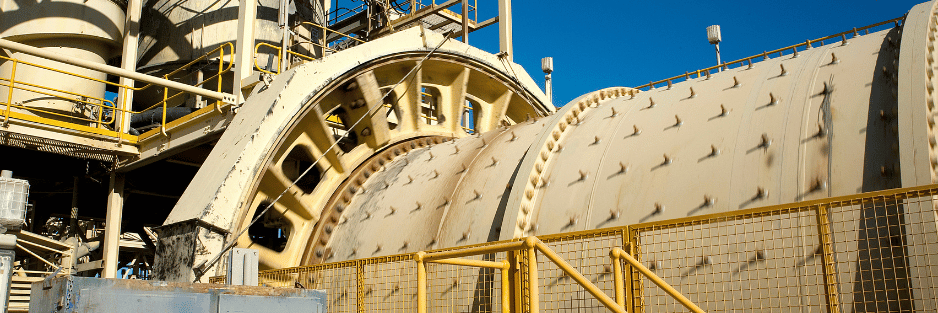
Maintain Pressure Vessels & Process Equipment – Fundamental
Types of pressure vessels and process equipment at site, key purpose of pressure vessels and process equipment at work location , how to Use the appropriate tools and equipment to maintain pressure vessels and process equipment, functional parameters of pressure vessels and process equipment, typical pressure vessels and process equipment, how to monitor integrity of pressure vessels and process equipment, how to evaluate and Interpret integrity data of pressure vessels and process equipment.
Risk understanding, define risk criteria and risk management, Damage mechanisms and failure modes, Probability of failures and its consequences, residual risk of operation and the mitigation controls related to the operation of plant facilities. the main hazards and their consequences and control measures in oil and gas processing, the importance of Instrumented Protective Systems (IPS) and describe its function. the different types of corrosion mechanisms.
By the End of the course Participant will be able to understand fundamentals of:
- What are Pressure Vessels and process equipment
- Key purpose of pressure vessels uses
- Types of Pressure Vessels & process equipment
- Materials Selection for Pressure Vessels
- Design of Pressure Vessels
- Quality Testing and Inspection of Pressure Vessels
- How to make periodical inspection for the process equipment including pressure vessels
- Maintain pressure vessels in fit for purpose condition
- Understand risk
- Understand Damage mechanisms and failure modes
- Define Probability of failures and its consequences
- Understand the importance of Instrumented Protective Systems (IPS)
- Corrosion mechanisms
- How to make cost reduction by applying the new technologies such as RBI, IPS , permanent monitoring systems
Asset integrity engineers, Production engineers ,Inspection and Maintenance engineers
This interactive training course includes the following training methodologies as a percentage of total tuition hours :
- Lectures
- Workshops, work presentations ,
- Group Work in case study & Practical Exercises.
- Videos and general discussions
- Pre-Test and Post Test
Course Outline
Introduction
What is the pressure vessel
Pressure vessels classification:
- According to use:
- Storage 2- process
- According to shape:
- Cylindrical shaped:
1-Horizontal. 2-Vertical.
- Conical shaped.
- Sphere shaped.
purpose of pressure vessels and process equipment:
- Fluid Separation
- Filtration
- Surge Absorption
- Steam Generation
- Conversion
- Storage
- Heat Exchangers
- Illustrated Video
Main component of pressure vessel:
Shell
Head
Nozzle
Support
Saddle
Leg Supports
Lug Supports
Skirt Supports
Illustrated Video
Pressure vessels internal components
Baffles.
Distributing piping.
Trays.
Mesh packing.
Catalyst bed supports.
Cyclones.
Pipe coils.
Spray nozzles.
Demisters.
Maintenance and overhaul of pressure vessels
Maintenance and overhaul
Periodic inspection
Anomalies
Regular maintenance
Emergency handling
Pressure vessel failure and preventive measures
Ductile fracture
Brittle fracture
Fatigue rupture
Corrosion cracking
Creep failure
Common faults and measures for pressure vessels
Overpressure
Over temperature
Abnormal sound
Abnormal deformation
Abnormal vibration
Factors considered while designing a pressure vessel
Design pressure.
Design temperature.
Maximum allowable working pressure (MAWP).
Minimum design metal temperature (MDMT).
Service and process purpose.
Low levels and high levels.
Volume.
Nozzles and manholes required.
Material considerations
Nominal thickness.
Corrosion allowance.
Vessel orientation (vertical or horizontal).
Stress analysis.
Site wind and seismic parameters.
Supports
Evaluate and Interpret integrity data of pressure vessels and process equipment.
Maintenance Techniques for Fired Equipment
Best practices for maintaining fired equipment and auxiliary systems
Using appropriate tools and equipment for maintenance tasks
Ensuring Integrity of Pressure Vessel
Evaluating integrity data and condition monitoring techniques
Identifying potential integrity issues and taking corrective actions
Safety Considerations in Maintenance of Pressure Vessel
Safety protocols and precautions for maintenance activities
Handling and mitigating potential hazards related to Pressure Vessel
Compliance and Regulations
Understanding industry standards and regulations for Pressure Vessel maintenance
Ensuring compliance with safety and environmental guidelines
Real-world case studies of maintenance and integrity evaluation
Hands-on exercises to reinforce learning and problem-solving skills
Preventive Maintenance and Performance Optimization
Developing preventive maintenance strategies for Pressure Vessel
Optimizing performance and efficiency of Pressure Vessel
Recap and Conclusion
Review of key concepts covered in the course
Final assessment and evaluation of participant’s understanding
